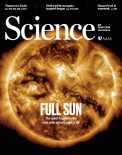Almudena Chaves-Pérez, Mahmut Yilmaz, Cristian Perna, Sergio de la Rosa, Nabil Djouder. URI is required to maintain intestinal architecture during ionizing radiation
Science, 2019
"URI overexpression in intestine protects mice from radiation-induced GIS". - Cristian Perna
Summary:
Ionizing radiation (IR) can cause gastrointestinal syndrome (GIS). In this paper, using mice models genetically modified, we show that high-dose irradiation increases unconventional prefoldin RPB5 interactor (URI) levels in mouse intestinal crypt, but organ regeneration correlates with URI reductions. URI overexpression in intestine protects mice from radiation-induced GIS, whereas halving URI expression sensitizes mice to IR. URI specifically inhibits β-catenin in stem cell-like label-retaining (LR) cells, which are essential for organ regeneration after IR. URI reduction activates β-catenin-induced c-MYC expression, causing proliferation of and DNA damage to LR cells, rendering them radiosensitive. Therefore, URI labels LR cells which promote tissue regeneration in response to high-dose irradiation, and c-MYC inhibitors could be countermeasures for humans at risk of developing GIS.
Why do you highligth this publication?
High dose of radiation associated to several contexts including medical interventions can produce severe intestinal toxicity in humans, known as gastrointestinal syndrome (GIS). Our publication strongly suggests that the measurement of intestinal URI levels could be used to predict population at risk of developing GIS. Remarkably, we also point out that c-MYC inhibitors could be used to prevent ionizing radiation damage in human intestine.
Publication commented by:
Dr. Cristian Perna
Department of Pathology, Hospital Universitario Ramón y Cajal
Alcalá University


